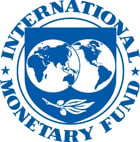
Typical street scene in Santa Ana, El Salvador. (Photo: iStock)
IMF Survey : Experts Debate Policy Options for China’s Transition
May 18, 2016
- Workshop focuses on China’s economy at a critical juncture
- China’s economy combines dynamism and distortions
- Continued growth will depend on a more open, competitive economy
After rapid economic growth for nearly three decades, China today faces the challenge of economic rebalancing against the backdrop of slow and uncertain global growth, panelists said at a recent conference.

Electronics store in Beijing: China’s shift toward a new growth model is spurring debate among top economists (photo: Mark Schiefelbein/AP/Corbis)
FIRST IMF WORKSHOP ON CHINA
The country is now at a critical juncture, a group of world-class researchers said at the First Research Workshop on China’s Economy, organized jointly by the IMF and the Federal Reserve Bank of Atlanta on April 28-29.
While investment and exports have been a motor for growth, China is increasingly experiencing structural issues: widening inequality, overcapacity as a consequence of policy distortions, unsustainable environmental costs, volatile financial markets, and rising systemic risk.
The workshop, held at the IMF’s headquarters in Washington, D.C., explored a series of questions that have emerged as China shifts toward a new growth model. Is this the end of the growth miracle? Will the Chinese renminbi one day be as important as the U.S. dollar? Should the rapidly increasing shadow banking activity in China be a source of concern? How worrisome is the rapid rise in China’s housing prices?
Panelists shared their views on these and other issues facing the world’s second largest economy (or largest, if measured on a purchasing-power-parity basis).
Is China’s economic growth sustainable?
Understanding the source of China’s tremendous growth was a recurring theme at the workshop. “China’s economy combines enormous dynamism with huge distortions,” observed Loren Brandt (University of Toronto). Brandt described his research based on China’s firm-level data and emphasized that firm dynamics (entry and exit), especially firm entry, have been the main source of the productivity growth in the manufacturing sector.
Echoing Brandt’s message, Kjetil Storesletten (University of Oslo) discussed regional growth disparities and showed that barriers preventing firms from entering an industry account for most of the disparities. Such barriers are more severe for privately owned firms in regions in which state-owned enterprises (SOE) dominate, he said.
In his keynote speech, Nicholas Lardy (Peterson Institute for International Economics) offered an upbeat view on China’s transition to a new growth model, one in which the service sector plays a larger role than manufacturing. The bright side of the service sector, he noted, is its continued strong productivity growth. The development of financial deepening and the stronger social safety net are contributing to increased consumption, which helps to rebalance the economy.
However, he emphasized, SOE reforms remain critical as the service sector cannot provide a silver bullet for a successful transition.
Central bank’s policy decisions
Several participants tried to discern how the People’s Bank of China (PBC) conducts monetary policy. Tao Zha (Center for Quantitative Economic Research in Atlanta Fed and Emory University) found that the PBC reacts sharply when GDP growth rate falls below its target, increasing the money supply by 11.5 percentage points for every 1 percentage point shortfall.
Mark Spiegel (Center for Pacific Basin Studies) discussed the trade-offs involved in Chinese monetary policy—for example, controlling the exchange rate versus maintaining inflation stability. He also argued that the heavy use of reserve requirements on banks as a monetary policy tool might have an unintentional consequence to reallocate capital from SOEs to more efficient privately owned firms and could therefore offset the resource misallocation caused by the easy credit to SOEs that banks granted in the high growth years.
Renminbi versus the dollar
Eswar Prasad (Cornell University and Brookings Institution) argued that China’s capital account will become more open and the renminbi will be used more widely to denominate and settle cross-border transactions. But he also noted that legal and institutional constraints in China were likely to prevent the renminbi from serving as a safe-haven currency as the U.S. dollar does today.
Moreover, he said, the current sequencing of liberalization initiatives—that is, removal of capital account restrictions before appropriate financial market supervision and regulation and exchange rate reform—poses financial stability risks.
Shadow banking and the housing market
Recently, volatile Chinese financial markets and continued housing price appreciation have raised serious financial stability concerns.
Michael Song (Chinese University of Hong Kong) argued that rapidly rising shadow banking activity is an unintended consequence of financial regulation. Restrictions on deposit rates and loan-to-deposit ratios have led to the issuance by banks of “wealth management products” to attract savers with higher returns. Since these restrictions had a greater impact on small banks, the big state banks had more room to undercut the smaller banks by offering wealth management products with higher returns and then restricting liquidity to them in inter-bank markets, ultimately making the banking system more prone to liquidity distress and runs.
Hanming Fang (University of Pennsylvania) found that, except in big cities such as Beijing and Shanghai, housing prices in China’s urban areas more or less tracked rising household incomes. In his view, the Chinese housing boom is thus unlikely to trigger an imminent financial crisis. He warned, however, that housing prices may fall rapidly if economic growth slows dramatically, and that such a development could, in turn, amplify the economic downturn.
Rising wage inequality
China’s rapid growth over the past two decades has been accompanied by rising wage inequality, an issue highlighted by two conference participants. Dennis Yang (University of Virginia) explored the distributional effects of trade openness in China and found a significant impact on wage inequality of China’s accession to the World Trade Organization in 2001.
Chong-En Bai (Tsinghua University) argued that the decline after 2008 of the skill premium—that is, the ratio of the skilled labor wage to the unskilled labor wage—can be explained by the Chinese government’s targeted credit extension to unskilled labor-intensive infrastructure sector (as part of the fiscal stimulus following the global financial crisis). Such distortionary policies might have short-run growth benefits but could lead to long-run welfare losses, he said, especially when rural-to-urban migration has run its course.


